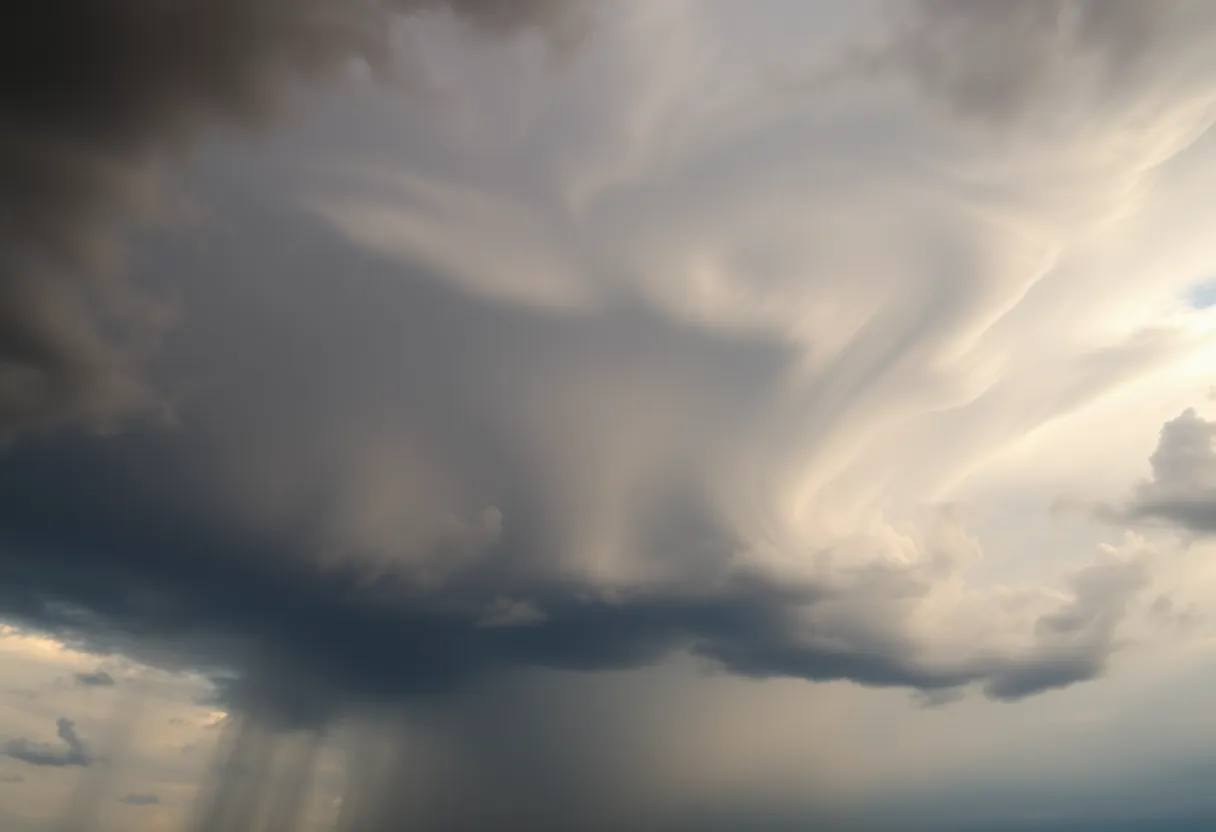News Summary
On a stormy morning in Columbia, residents were treated to a rare sight as Asperitas clouds formed in the sky. This captivating cloud formation resembles undulating waves, offering a breathtaking visual experience amidst rain showers. The unique phenomenon, caused by instability in the atmosphere, left commuters and observers in awe, providing a moment of beauty in an otherwise dreary day. The rare clouds, officially recognized by the World Meteorological Organization in 2017, serve as a reminder of nature’s wonders even during stormy weather.
Columbia Residents Treated to Rare Asperitas Clouds During Stormy Morning
On a stormy Wednesday morning in Columbia, residents found themselves greeted by a visual spectacle that only nature could provide. As the rain began to fall and scattered showers burst onto the scene, a remarkable cloud formation known as Asperitas clouds appeared, captivating the eyes and imaginations of onlookers. This delightful sight didn’t just bring beauty to an otherwise dreary commute; it added a touch of wonder to a day that could have easily been categorized as ordinary.
A Rainy Start to the Day
Early morning commuters faced some challenges as they set out on their daily routines. Rain showers and occasional storms made the roads slick and visibility tricky. But just as many were adjusting their windshield wipers and navigating puddles, the sky had a surprise in store. As the rainfall intensified, it was not just droplets filling the sky but rather a magical display of rippling clouds.
The Beauty of Asperitas Clouds
For those lucky enough to spot them, the Asperitas clouds offered a breathtaking experience. This unique cloud formation resembles undulating waves, creating a stunning visual effect that draws admiration. Imagine looking up at the sky and feeling like you’re peering down into a rough sea, with beautifully textured layers cascading above you. This exquisite appearance is attributed to turbulence in the atmosphere, amplifying those mesmerizing wave patterns that characterize these dazzling clouds.
A Meteorological Wonder
So, what exactly are these clouds? Asperitas clouds form in specific atmospheric conditions and are typically observed during unstable weather patterns. They primarily appear among altocumulus and stratocumulus cloud types, which are low to mid-level clouds commonly seen before storms. These clouds, while not rain producers themselves, often show up in tandem with convective rain clouds, resulting in that captivating look during stormy weather.
How They Formed
As the storm rolled through Columbia after 7:30 a.m., the downdraft from the falling rain highlighted the majestic waves of the Asperitas clouds. This phenomenon occurs as air is lifted up and down, thanks to the turbulent conditions created by the rainstorm. The altitude of these clouds typically hovers between 4,000 and 10,000 feet, where they can create this striking visual effect that leaves observers in awe.
A Rare Sight
Asperitas clouds, while beautiful, are also quite rare. They were officially added to the World Meteorological Organization’s International Cloud Atlas in 2017, marking their recognition in the world of meteorology. Their unique appearance and connection to unstable atmospheric conditions make them a favorite among weather enthusiasts and anyone with an appreciation for the wonders of our natural world.
Grateful for Nature’s Show
So, as Columbia residents navigated the challenges of a stormy commute this Wednesday, many took a moment to look up and appreciate the beauty of the Asperitas clouds. While rain can often dampen spirits, the sight of these stunning clouds brought a bit of cheer and wonder to the day. It’s a reminder that even in less-than-ideal weather, nature has a way of surprising us. Embrace the rain, look up at the clouds, and marvel at the magnificent show our world can put on!
Deeper Dive: News & Info About This Topic
HERE Resources
Additional Resources
- WLTX News
- Wikipedia: Asperitas
- Slate
- Google Search: Asperitas clouds
- Weather.com
- Encyclopedia Britannica: cloud
- PhillyVoice
- Google News: Asperitas clouds








